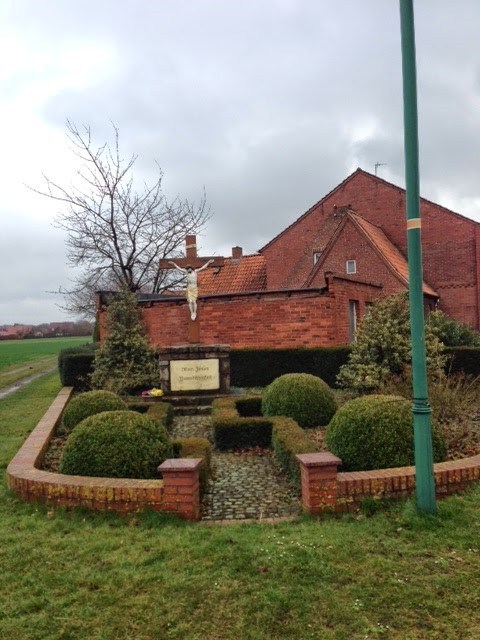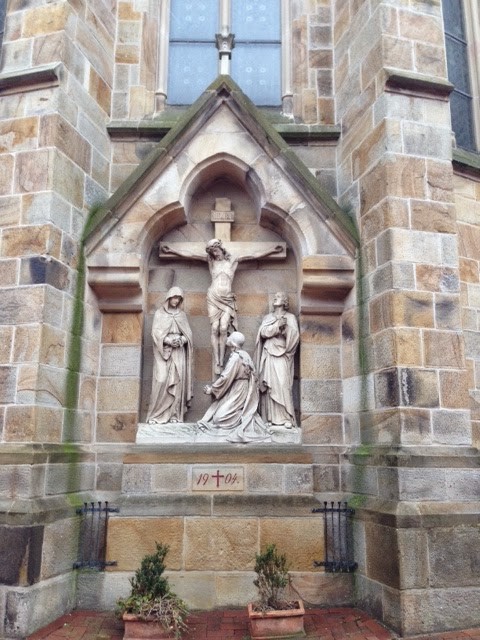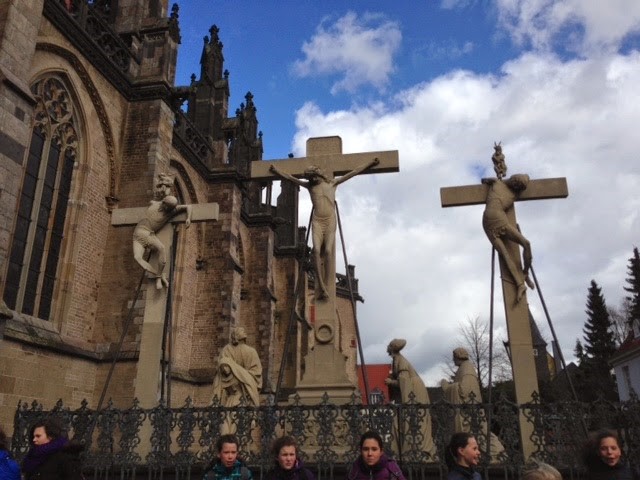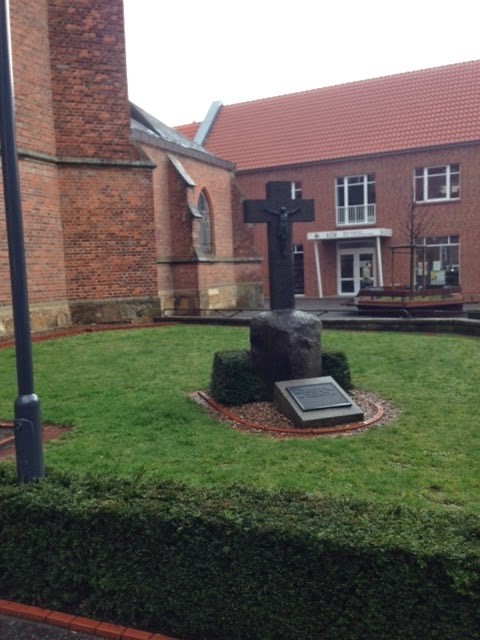German Wayside Crosses
April 15, 2015

Diana Stanley is a Museum Volunteer studying abroad in Europe until June. She's writing as a Field Reporter while she travels. She recently explored Germany. Follow our blog to receive her updates throughout the coming months.
By Diana Stanley, Field Reporter
When traveling across the great expanse of America, travelers can often spot little religious alcoves dotting the horizon. They might contain Catholic Marian grottoes, named for the inevitable statue of the Virgin Mary, or a simple cross on the mountaintop. If you are ever traveling in Central Europe and get lost without any maps or signs (it would be pretty difficult), you could figure out your rough location based on the wayside shrines.

In Northern Germany, these shrines usually take the form of large ornate crucifixes. Sometimes the figures of Mary and St. John the Evangelist are also shown kneeling at the foot of the cross. These are private and family owned so avoid getting too close.

This idea echoes a similar type of monument found in France. Cavalries are massive stone crucifixion scenes typically near village churches. While common in Brittany (northwest France), I did find one by a church near the German-Dutch border. Near the border is the Rhine land, where there are many shaft crosses. These get their name from the “shaft” or column attached to the cross.

If in the German Upper Palatine and Bavarian regions, you might be lucky enough to spot one of 300 “Wayside Crosses.” These stone treasures were erected from the 13th to the 15th centuries. The monuments had a variety of purposes. They might commemorate a lost loved one or be an act of atonement for a crime, usually murder. Legend says misfortune follows the removal of an atonement cross.

Plain crosses are tell-tale signs one is in North-Central and Central Germany. This is traditionally Protestant territory which veered away from crucifixes or Marian shrines. An exception might be a Lutheran cross. Luther did not have a problem with crucifixes, but later Protestant reformers did.
The last German region is marked by an absence of wayside crosses. East Germany’s population does not predominately claim any religion. This trend started in the World Wars and continued under the Soviet occupation. Wayside shrines and crosses are still visible, but they are likely to much older than other parts of the country.
Just like with the Brittany cross example, some styles bleed over into unconnected regions, which is why it is still a good idea to follow a map. Germany’s shrines make for fun comparisons to our own memorials. For instance, there is a databank for stolen medieval wayside crosses, apparently a problem in the area.